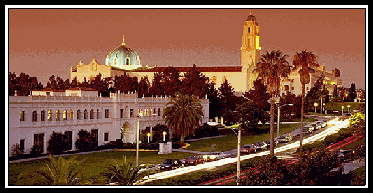|
Answers to Recommended
Problems
Chapter 7
12. (a)
MR = 20 - 10 Q, MC = 10
MR = MC => 20 - 10 Q = 10 => Q = 1
million => P = 20 - 5 (1) = $15
Profit = Revenue - Cost = (P x Q) - (variable
costs + fixed costs)
= ($15 x 1 million ) - ($10 x 1 million + $2
million + $2 million) = $15 million - $14 million = $1 million
(b)
- Even if the firm does not operate, it must
pay firm N the fixed charge of $2 million
Profit (if operating) = Revenue - Cost = (P x
Q) - (variable costs + fixed costs)
= ($15 x 1 million ) - ($10 x 1 million + $2
million + $4 million)
= $15 million - $16 million = - $1
million
Profit (if not operating) = Revenue - Cost =
$0 - $2 million = - $2 million
=> the firm should operate over the next
six months
- After six months, the fixed charge of $2
million no longer has to be paid
Profit (if operating) = - $1
million
Profit (if not operating) = $0 million
=> the firm should not operate after
six months
(c)
The hard-core users "shop around,"
which means that their demand is price elastic. This implies a
lower price if price discrimination is used. On the other
hand, they use more time than the average customer, which means the
MC of serving them is higher. This implies a higher price for
those customers. It's uncertain which factor would prevail.
(d)
Under the new terms, MC = 0, so this becomes a
pure selling problem. The firm should maximize revenue by
setting MR = 0 (= MC).
MR = 20 - 10 Q = 0 => Q = 2 million => P = 20 - 5
(2) = $10
Profit = Revenue - Cost = (P x Q) - (fixed costs)
= ($10 x 2 million ) - ($15 million + $2
million) = $20 million - $17 million = $3 million
(e)
MR = 20 - 10 Q + 10
MR = 30 - 10 Q = 0 => Q = 3 million => P = 20 - 5
(3) = $5
Profit = Revenue - Cost = (P x Q + 10 x Q) - ( fixed costs)
= ($5 x 3 million + $10 x 3 million) - ($15 million + $2
million) = $45 million - $17 million = $28 million
Chapter 10
2. (a)
- This problem will be done twice. The
first time assumes the four other carriers have an equal share
(3.5%) of the market:
CR4 (Before) = 30 + 30 +19 + 7 = 86
CR4 (After) = 30 + 30 + 26 + 3.5 = 89.5
HHI (Before) = 302 + 302
+192 + 72 +3.52 + 3.52 +
3.52 + 3.52 = 2259
HHI (After) = 302 + 302
+262 +3.52 + 3.52 + 3.52
+ 3.52 = 2525 => increase of 266
- The second time does it using variables (s1,
s2, s3, s4) to represent the
shares of the four other carriers:
CR4 (Before) = 30 + 30 +19 + 7 = 86
CR4 (After) = 30 + 30 + 26 + s1
= 86 + s1
HHI (Before) = 302 + 302
+192 + 72 + s12 + s22
+ s32 + s42 = 2210 +
s12 + s22 + s32
+ s42
HHI (After) = 302 + 302
+262 +s12 + s22
+ s32 + s42 = 2476 +
s12 + s22 + s32
+ s42 => increase of 266
(b)
The Justice Department standard is that if the
post-merger HHI is in the highly concentrated region (>1800), a
change of +50 in the HHI would cause the merger to be
questioned. The change here was +266; therefore, the merger
would be questioned.
(c)
Route integration would be beneficial to
travelers and make United a stronger competitor. The Justice
Department allowed the acquisition because the market would then
have three strong competitors that were roughly equal in size.
14. (a)
If PX = 8, all three consumers buy
the product. Revenue = 3 x 8 = 24, cost = 3 x 10 = 30, profit
= 24 - 30 = -6
If PX = 14, B and C will buy the
product. Revenue = 2 x 14 = 28, cost = 2 x 10 = 20, profit =
28 - 20 = +8
If PX = 20, will buy the
product. Revenue = 1 x 20 = 20, cost = 1 x 10 = 10, profit =
20 - 10 = +10
Therefore, the optimal price for X is 20, and
by the same reasoning, the optimal price for Y is 20.
(b)
Each consumer is willing to pay 28 for the
bundle. Revenue = 3 x 28 = 84, cost = 6 x 10 = 60, profit = 84
- 60 = +24
|


